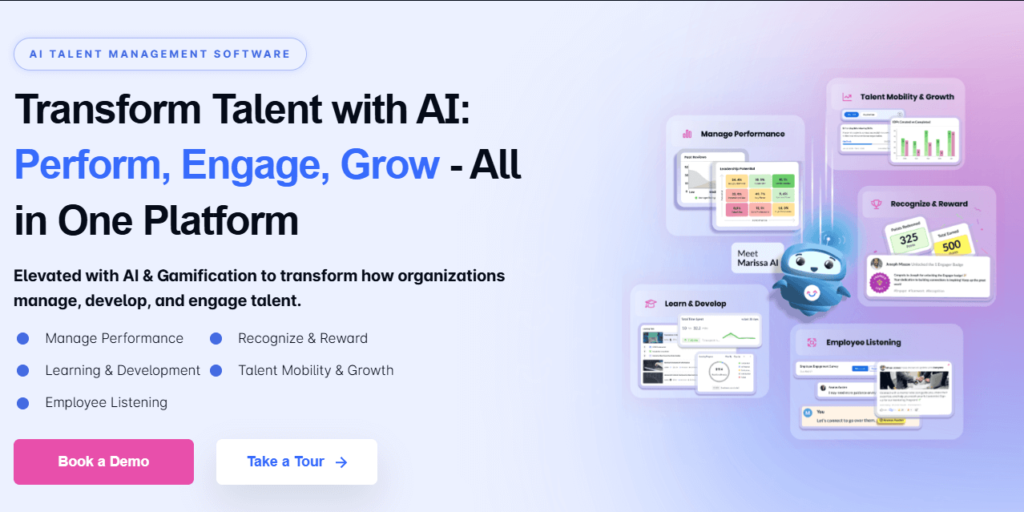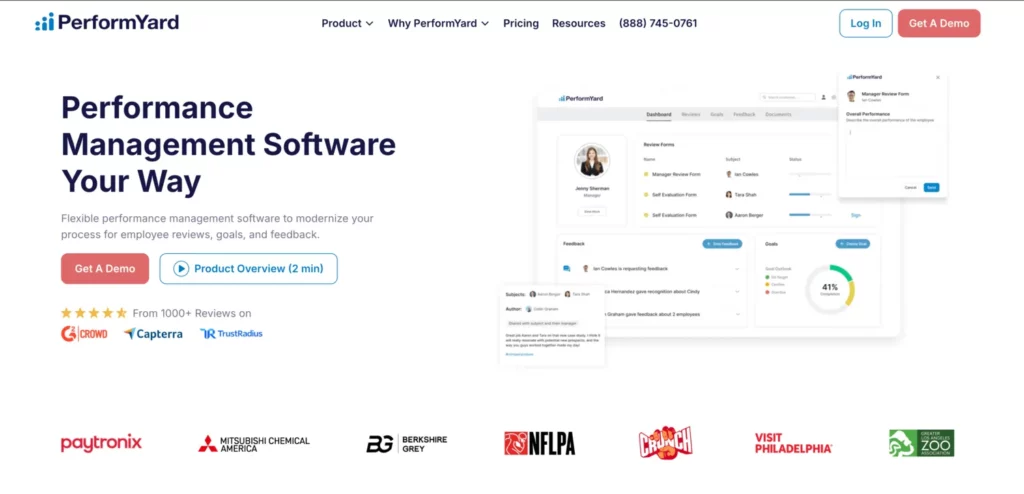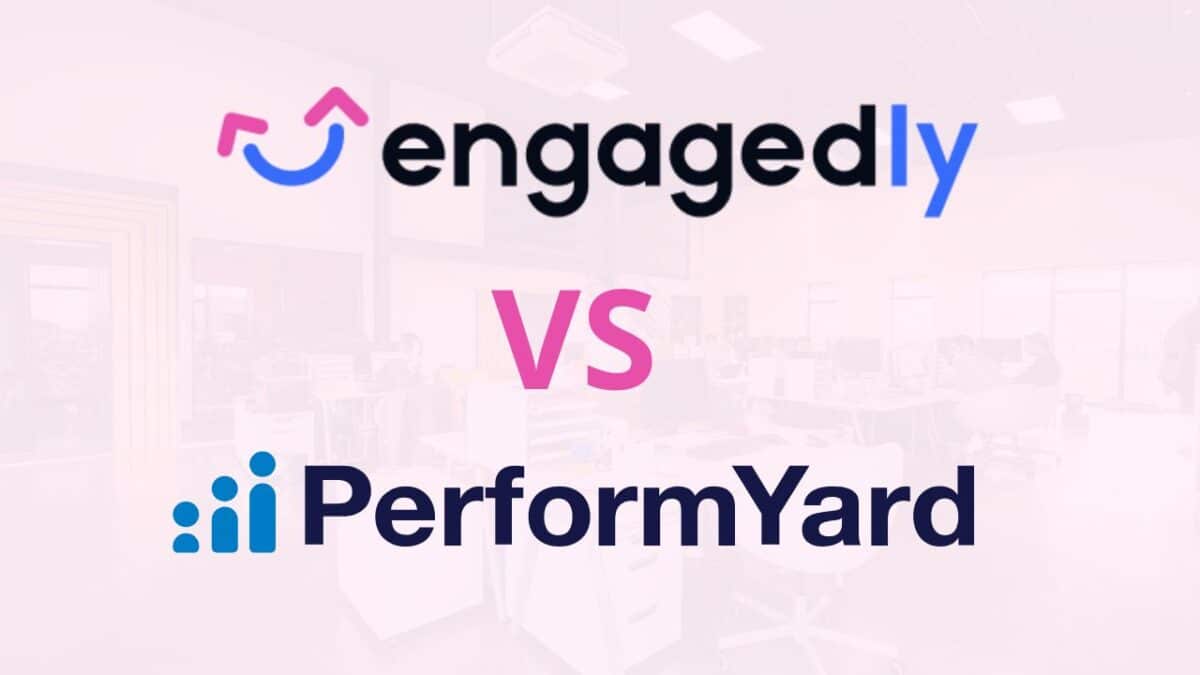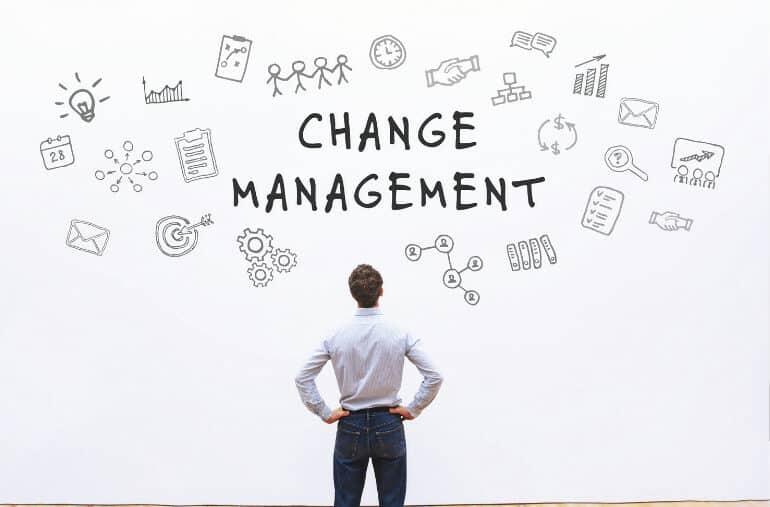Discover why HR leaders choose PerformYard instead of Engagedly for their performance management strategies.
Now, flip that question: what if the very features drawing them in are exactly where Engagedly goes further?
In 2025, the performance management landscape demands more than simple review cycles and feedback forms. Today’s top organizations need solutions that are intelligent, integrated, and engaging—platforms that don’t just manage performance but actively drive growth, culture, and retention.
Both Engagedly and PerformYard bring strong capabilities to the table. But when you take a closer look—across areas like AI-powered analytics, user engagement, learning and development, and long-term scalability—Engagedly emerges as the platform of choice for forward-thinking HR leaders.
This in-depth comparison breaks down how both platforms perform across the categories that matter most—and reveals why more companies are making the strategic switch to Engagedly.
1. Feature-by‑Feature Comparison
Overview of Capabilities
Engagedly delivers an end-to-end talent management suite, combining:

- Performance reviews, real-time feedback, recurring check‑ins, 360-degree assessments, and goal alignment (OKRs/KPIs) within a unified E3 framework.
- AI-powered insights and workforce analytics to drive smarter decisions.
- A gamified learning experience via LXP—complete with personalized paths, assessments, certifications, and compliance tracking.
- Engagement tools including surveys, social sharing, peer praise, interest groups, and pulse checks.
PerformYard offers a flexible, modular approach with:

- Customizable workflows encompassing reviews (including annual, project-based, 360), continuous feedback, goal setting and check‑ins, and engagement surveys.
- Recognition tools and performance note tracking to support ongoing conversations.
- Reporting and analytics capabilities.
AI & Analytics: Agentic AI Advantage

Engagedly goes beyond traditional analytics with Marissa™ AI, a suite of autonomous agents that streamline HR workflows and surface actionable talent insights—all embedded at the core of the platform. Among the role-based agents are:
- HR Help Desk Agent for 24/7 policy support
- Growth Agent for tailored development planning
- Meeting Agent for automated meeting summaries and action tracking
- Talent Optimization & Engagement Driver Agents that proactively nudge managers to meaningful engagement and performance actions
- And more, such as Learning Recommendation and Goal Setting agents
These capabilities—absent in PerformYard’s offerings—empower organizations with automation, personalized guidance, and decision support that scale across the employee lifecycle.
Head-to-Head Snapshot
| Capability | Engagedly | PerformYard |
|---|---|---|
| Performance Reviews | Full suite (360, check‑ins, real‑time feedback, goals) | Robust modular reviews and check‑in tools |
| AI & Analytics | Deep AI-driven talent insights and analytics | Solid reporting and analytics |
| Learning & Development | AI-powered LXP with gamification, certification, compliance | Lacks built-in LXP |
| Engagement & Culture | Social, pulse surveys, peer praise, interest groups | Feedback, recognition, engagement surveys |
| Customization & Flexibility | Highly customizable across modules | Flexible workflows and templates |
While both platforms are capable, Engagedly offers a broader, deeply integrated toolkit—especially in learning, engagement rhythm, and AI-enhanced decision-making.
2. Pros and Cons
Engagedly
✔ Pros
- Comprehensive, unified platform across performance, engagement and learning.
- Strong AI tools for analytics and personalized learning.
- Highly engaging features—gamification and social sharing create a culture of recognition.
- Excellent customer support; recognized for responsiveness and partnership mentality.
⚠ Cons
- Some users note a learning curve in advanced modules or complex multirater setups.
- LMS capability is strong but may require external SCORM‑compliant systems for deeper compliance needs.
PerformYard
✔ Pros
- Clean, intuitive interface; praised for ease of use and simple setup process.
- Flexible workflow and templates adapt well to varied organizational needs.
- Strong customer service with high satisfaction scores (~9.7–9.8/10).
⚠ Cons
- Integration options might be less extensive; some feedback points to room for improvement.
- Mixed reviews with at least one strongly negative account that emphasized customer service issues.
Integration & Compatibility
In the modern HR tech stack, seamless integration is no longer optional—it’s essential. Let’s compare how Engagedly and PerformYard stack up when it comes to connecting with the systems your organization depends on.
Engagedly: A Rich, Intelligent Integration Ecosystem
Engagedly offers an exceptionally comprehensive and adaptable integration framework designed to automate workflows and enhance data consistency across systems:
- HRIS & User Sync: Connects effortlessly with leading platforms including ADP, BambooHR, HiBob, Namely, Paychex, Paylocity, Gusto, Personio—and more—ensuring that user and employment data syncs automatically and accurately.
- Single Sign-On (SSO): Supports enterprise-grade authentication via Okta, Azure AD (Microsoft Entra), AD FS, JumpCloud, OneLogin, and more—providing secure, streamlined access.
- Communication Channels: Deep integrations with Gmail, Microsoft Outlook, Slack, and Microsoft Teams make engagement effortless and native to your team’s workflow.
- Goals & LXP Tools: It syncs directly with tools like Jira, Salesforce, Google Sheets for goal tracking, and connects to learning networks such as LinkedIn Learning, Udemy, BizLibrary, Go1, and OpenSesame—creating a unified talent development ecosystem.
- Universal API & Automation: With Tray.ai connectors and a REST-based Unified API, Engagedly offers flexibility for advanced automation—integrating with CRMs, analytics tools, and bespoke systems with minimal lift.
The takeaway: Whether you’re streamlining HR operations, enabling seamless login, embedding in daily communication channels, or constructing advanced workflows—Engagedly’s integration capabilities are strategy-led and future-ready by design.
PerformYard: Core Integrations with HRIS Focus
PerformYard delivers solid functionality for organizations seeking essential connectivity in performance management workflows with its integrations:
- HRIS System Sync: Supports major platforms including ADP Workforce Now, UKG Pro, Gusto, BambooHR, Rippling, plus support for SFTP imports—making setup straightforward for data synchronization.
- Communication Tools: Integrates with Slack and Microsoft Teams—for context-aware feedback and recognition inside established collaboration tools.
- API Access: Offers REST APIs and ecosystem support via secondary platforms like Tray.ai for further automation.
While PerformYard offers a strong baseline for core HRIS and communication integration, it offers fewer out-of-the-box connections with learning platforms or goal tracking systems.
Why Engagedly Stands Out
| Integration Domain | Engagedly | PerformYard |
|---|---|---|
| HRIS & User Sync | Broad support across most major HR systems | Core platforms like ADP, BambooHR, Gusto |
| SSO & Security | Full enterprise SSO via Okta, Azure AD, OneLogin, and more | Not prominently featured |
| Communication Tools | Gmail, Outlook, Slack, Microsoft Teams integration | Slack, Teams |
| Learning & Goals | LXP + LinkedIn Learning, Udemy, Go1, Goal tools (Jira, Salesforce, Sheets) | Limited offerings in goal or learning ecosystems |
| Developer/API Access | Unified API + Tray.ai connectors for deep automation | API + limited universal connectors |
Customer Reviews & Market Reputation
Engagedly: Endorsed for Support, Engagement & Innovation
Across multiple independent review platforms, Engagedly consistently earns high praise for its responsiveness, engagement features, and intelligent design:
- Capterra: Engagedly receives a perfect 4.6 out of 5 in categories including Ease of Use, Customer Service, Features, Value for Money, and Likelihood to Recommend based on user feedback. One reviewer raved: “If I run into an issue… the support team has been outstanding… From a cost perspective… you cannot go wrong. 12/10 would recommend.”
- Software Advice: The platform holds a solid 4.6 overall, with 4.7 for both Customer Support and Value for Money, and 4.4 for Ease of Use. Users highlight thoughtful customer care, gamification, and customization—while noting room for improvement on some configuration experiences.
- TrustRadius: Engagedly is praised for its comprehensive approach to performance, engagement, and learning in one system:
“We love that it centralizes performance reviews, feedback, goals, and learning into one seamless platform.”
Some users mention initial complexity during setup, but most affirm that onboarding support helps bridge that gap effectively. - SHRM Vendor Directory & Info-Tech: Engagedly is recognized by HR professionals on platforms like SHRM and Info-Tech for its strategic alignment with employee development and for driving engagement across distributed teams.
In summary: Engagedly shines not only for advanced features but for delivering a supportive, people-centered experience that consistently earns user trust and satisfaction.
PerformYard: Exceptional Satisfaction for Usability & Service
PerformYard shines when it comes to customer happiness and operational ease—particularly among mid-market organizations:
- PerformYard’s own figures reveal extraordinary scores:
- 9.8/10 for Ease of Doing Business and Business Partner Rating
- 9.7/10 for Quality of Support
- G2 (Spring 2023) also recognized PerformYard with top “Highest Satisfaction” honors—scoring 98% Relationship Score, 97% for Ease of Use and Support, and 96% for Ease of Use overall. This underscores their reputation for customer care and usability excellence.
- Capterra & Software Advice echo this with average star ratings around 4.7 out of 5 across platforms. Reviews commonly praise simplicity, straightforward review workflows, and intuitive dashboards.
However, it’s worth noting that while many users report stellar experiences, some raise concerns: one user criticized the company’s contract process, calling it “terrible… forced” with limited flexibility.
Pricing and Plans (Detailed Upgrade)
Engagedly Pricing
- Modular pricing, billed annually, starts at $5–$8 per user/month for performance management, with additional modules priced between $2–$10 per user/month, depending on your suite selections.
- Options include: Learning Experience Platform, Mentoring Suite, Compensation Planning, Deskless Communication, and more.
- Every plan includes core features such as Marissa AI, workflow automation, mobile access, talent analytics, and extensive integration support.
- Professional services are tiered (Essential, Accelerate, Optimize) to offer setup, strategic guidance, or fully managed implementation support.
PerformYard Pricing Snapshot
- Performance management: $5–$10 per user/month, inclusive of review cycles, goals, feedback, reporting, and support.
- Engagement survey bundle: additional $1–$3 per user/month.
- Meetings and standalone surveys: extra $2–$4 each, when bundled.
While PerformYard is transparent and cost-effective, Engagedly’s modular structure offers broader choice and strategic scalability—especially for organizations that want to invest in learning, mentoring, recognition, and AI-enablement alongside performance.
Why Leading Organizations Choose Engagedly Over PerformYard in 2025
While PerformYard emphasizes its flexibility, ease of use, and support, Engagedly goes several steps further—delivering a truly intelligent, engaging, and future-ready performance management solution. Here’s how Engagedly outperforms PerformYard where it matters most:
🔄 Engagedly is Intelligent and Truly Flexible
What PerformYard says: PerformYard helps tailor your process without enforcing a rigid structure.
Why Engagedly goes further:
Engagedly doesn’t just support your process—it amplifies it. Powered by Marissa™ Agentic AI, Engagedly proactively recommends smarter workflows, nudges managers with real-time insights, and dynamically adapts to evolving team needs. Rather than static templates, you get an intelligent system that evolves with your people and your strategy.
- AI-driven goal alignment, check-ins, and growth paths tailored to your culture
- Customizable review cycles, 360° feedback, competency frameworks, and OKRs
- Built-in learning paths and performance-linked development
The result? A performance strategy that’s flexible and forward-thinking—not just administratively convenient.
✅ Engagedly is Easy to Use—and Designed to Engage
What PerformYard says: Their platform simplifies employee reviews with an easy-to-navigate UI.
Why Engagedly wins here too:
Engagedly offers a modern, intuitive user experience designed for engagement—not just completion. While PerformYard offers a clean interface for admins, Engagedly focuses on employee and manager adoption through:
- Gamified UX, customizable dashboards, and role-based workflows
- Seamless mobile experience
- Real-time feedback and social recognition embedded into the flow of work
- Clear, contextual navigation and action-driven prompts
With Engagedly, the platform doesn’t just “work”—it gets used, embraced, and integrated into daily culture.
🤝 Engagedly is Supportive—and Built for Long-Term Success
What PerformYard says: Unlimited expert support with a dedicated success manager and training.
Why Engagedly delivers more:
Engagedly offers tiered onboarding and success services based on your growth goals, from essential setup to hands-on strategic partnerships. You get:
- A dedicated Customer Success Manager (CSM) from day one
- Live onboarding, self-paced learning, and contextual help centers
- Advanced reporting and optimization services as you scale
And most importantly: our success team partners beyond setup—helping clients continuously evolve their performance culture.


























 Human Resources (HR) drives employee engagement initiatives in an organization. Here’s how they are doing it.
Human Resources (HR) drives employee engagement initiatives in an organization. Here’s how they are doing it.

 Assessing Diversity, Equity, and Inclusion (DEI)
Assessing Diversity, Equity, and Inclusion (DEI) Company culture
Company culture

 Burnout is a significant issue in the
Burnout is a significant issue in the 
 As stated earlier, women taking over leadership can have metamorphic effects on organizational performance.
As stated earlier, women taking over leadership can have metamorphic effects on organizational performance. 
 The emphasis on employee engagement is rising. However,
The emphasis on employee engagement is rising. However, 










